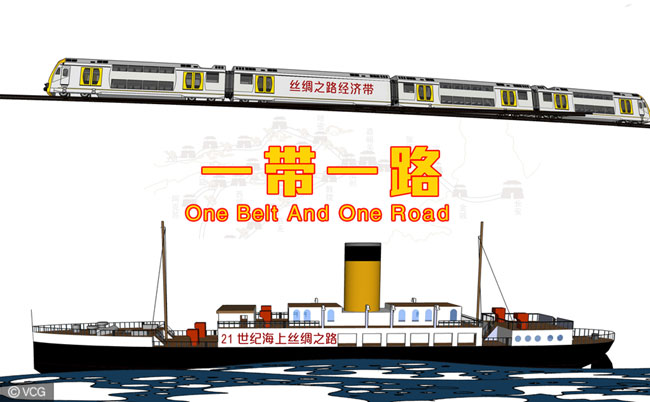Belt and Road Initiative beneficial to all

The now-concluded G20 Leaders Summit in Hangzhou has concentrated at four core concepts: Innovation, Invigoration, Interconnectivity and Inclusiveness, which have been dubbed the "4 I's." The last two are the essence of plans to enhance global economic revitalization and recovery. UN chief Ban Ki-moon has also highlighted sustainable growth as a key factor in the communiqué released from the Summit, the first in G20 history. In it, he suggests sustainable growth can be understood as a continuing development model. A path toward interconnectivity, inclusiveness and sustainable growth are also a new standard being offered in China's Belt and Road Initiative.
This means the "Belt and Road" strategy can't merely attempt to blindly copy either China's economic growth pattern or an industrial upgrade model used in other countries. Instead, "Belt and Road" needs to establish a tailor-made development path to cope with the diversified needs in countries where the local environment, social and cultural customs, as well as the level of economic development, need to be taken into account. This is the direction the "Belt and Road" plan should be heading toward.
The Belt and Road Initiative, first put forward by President Xi Jinping during his state visit to Kazakhstan in 2013, is a blueprint for building a trade and infrastructure network connecting Asia with Europe and Africa along ancient trade routes. Since its first suggestion three years ago, the blueprint has been detailed, and achievements have already gone far beyond expectations. The "Belt and Road" plan is now in common use in world politics and global economics.
"Belt and Road" has also been widely supported by the international community. More than 100 countries and international organizations are already participating in the initiative. China has signed cooperation agreements with more than 30 countries along the routes, and has launched international industrial capacity cooperation with more than 20 others. In 2015, bilateral trade among China and participating countries surpassed one trillion US dollars.
As an open and inclusive regional growth-oriented proposal, the "Belt and Road" project has a goal of using the advantages individual countries possess to expand economic links, while also serving to explore new economic growth areas. Its launch comes at a time when the developing and developed worlds both face challenges in trying to overcome a tendency during tough economic times to turn toward protectionism. In order to bolster the initiative, China has played a leading role in establishing the Asian Infrastructure Investment Bank (AIIB) and the Silk Road Fund. This is an example of China turning words into action.
By providing financing to the developing world, China is keen to spur infrastructure development, particularly at a time when securing funds for projects has proven difficult from Western-dominated organizations. This is a testament to China's global insight, as well as the government's long-term goal of creating a global society that works together. Steps such as capital infusions to the IMF, actively joining in UN peacekeeping missions and taking a lead on climate change are among the steps which show China wants to be a global leader.
Last but not least, win-win cooperation and benefit sharing need to be the linchpin which holds the "Belt and Road" strategy together. For China, in the short term, countries which participate are going to gain immediate benefits. But beyond this, "Belt and Road" is also going to help cement closer ties with China, as well as set an example for others to join in the win-win strategy.
In the long run, in addition to bringing a more pragmatic approach to China's foreign policy, as well as creating economic benefits for the 4.4 billion people who live in the "Belt and Road" region, the initiative should also help China open itself up more to the outside world through regional integration.
In the end, it just makes sense for the regional community and the businesses that work within it to become involved with the Belt and Road Initiative.

